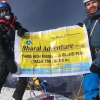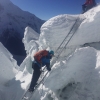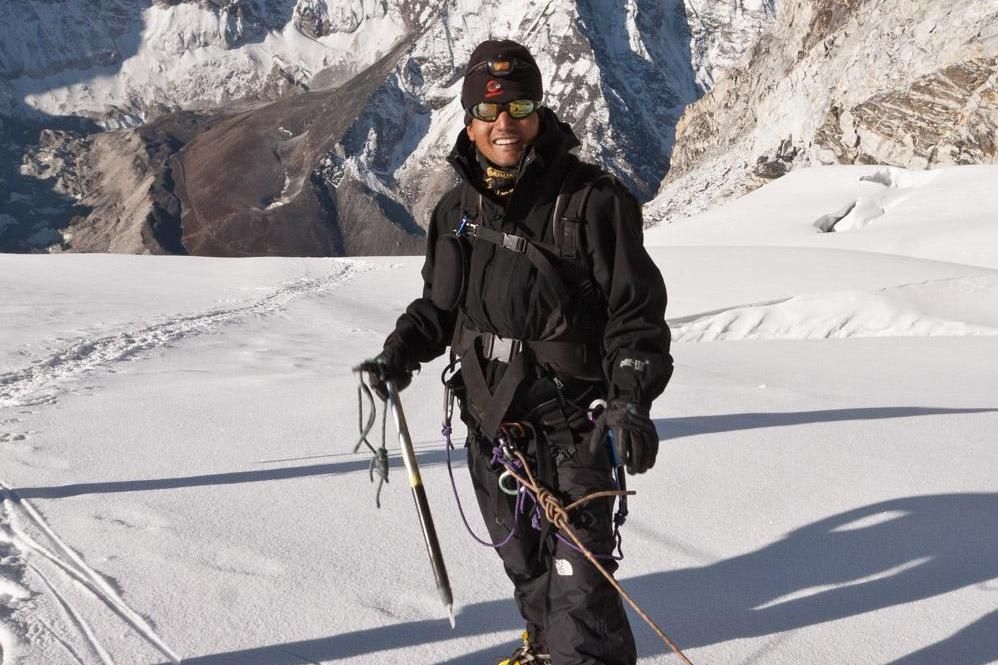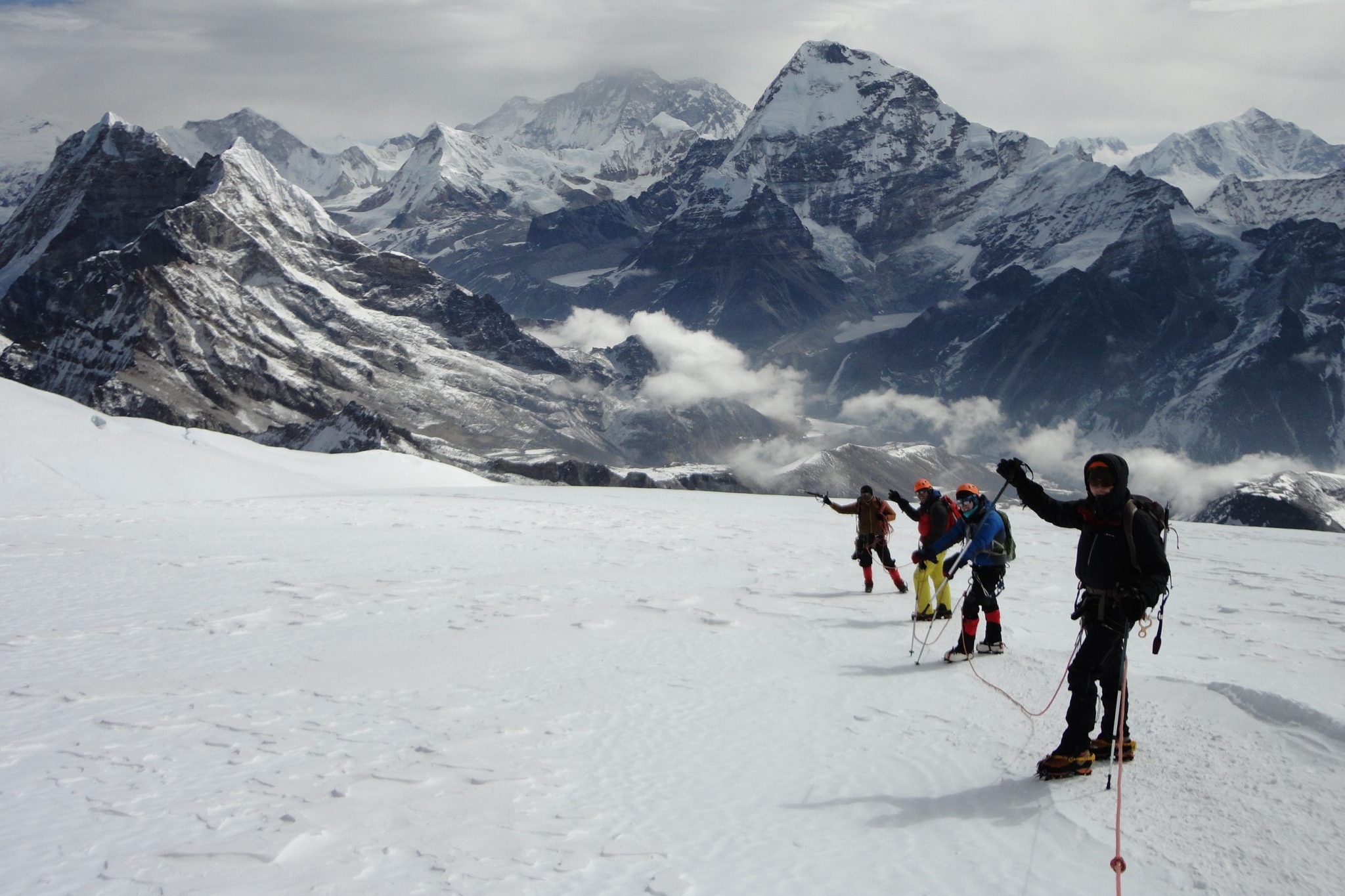

Permits To Climb Island Peak-250$ Per Person
Our airport representative will be receiving you at Tribhuvan International Airport, Kathmandu and s/he will be displaying a Bharal Adventure signboard outside the airport terminal. You will be then transferred to your respective hotel in our private tourist vehicle
After breakfast, guests will set off to a guided tour to four of the UNESCO World Heritage Sites in Kathmandu, Kathmandu Durbar Square – ancient palace of the then kings of Nepal, Hindu temple Pashupatinath, and Buddhist stupas Swayambhunath – The Monkey Temple, and Boudhanath
For your trip to Lukla, you will be driven to the airport in the early morning. Even the trip to Lukla is a once-in-a-lifetime adventure. The runway's distance between the two ends is only around remarkable 60 meters because to the airfield's high rating. You will hike to Phakding from Lukla through a magnificent, verdant environment with views of Kusum Kangraru. Spend the night at the Phakding guesthouse.
We will be climbing up through woods of Himalayan cedar and pine as we follow the Dudh Koshi River to the famous village of Namche Bazaar. Namche was formerly an important trading center where Tibetan and Nepalese merchants traded textiles, dried meat, and salt. Namche continues to be the main trading gateway in the Khumbu, drawing traders from the Himalayas and the valleys in addition to being a great place to buy for traditional goods. You'll stay in Namche for two days to relax, tour nearby markets, and spend time with your friends. We may get our first sight of Everest and its surrounding peaks while hiking to Namche.
The entire day has been set out for acclimatization. We will travel to the Syangboche Airport (3700m), which is believed to be the highest-located airport in the world, before continuing uphill to the Everest View Hotel for spectacular panoramic views of the Everest, Lhotse, Ama Dablam, and Tawache, among other mountains. We may also stop by the Everest Photo Gallery and Sherpa Culture Museum on the way back.
The smooth and simple path takes us to a point of view where we can see Mount Everest. It descends at Phungki Thanka deep into the Dudh Koshi Valley, and from there, it climbs the right slope of the Dudh Koshi valley to the Tengboche Monastery (3860m). The monastery serves as the Khumbu's spiritual focus. The challenging ascent is more than made up for by the breathtaking views of Mount Ama Dablam and, on clear days, of Mt. Everest and its neighboring peaks. Tengboche is surrounded by ridges covered with alpine forest and is situated at the meeting point of the Dudh Koshi and Imja Rivers. The woodlands also provide views of the Danphe birds.
We will hike through the village of Pangboche as we dip through lovely woods, pass the Imja Khola, and climb (3900m). Given that you won't lose altitude as much as you would on other days, today's trip may be the most exciting. Along the route, you may take in views of several peaks, including Mt. Ama Dablam, Mt. Lhotse, and others. To reach Dingboche, also known as the "summer valley," the journey continues through fields. You can observe a kilometer-long wall constructed at Dingboche to safeguard the village's crops. Along the path are walls made of Mani Stone.
Your second acclimatization day would be a six-hour hike to an elevation of 5100 meters. You will climb up to Nagerjun (5100m), a hill on the sides of the Chhukung valley just above Dingboche, after breakfast. The main goal is to sleep low and climb high. It's a physically demanding day since the footpath gets slightly hilly. At this altitude, climbing the hill may take up to five hours. Good views of the Lobuche East (6119m), Lobuche West (6145m), Taboche Peak (6367m), Thamserku (6608m), Kangtega (6685m), and Ama Dablam are available from this height (6856m).On a clear day, you might even be able to see Mount Makalu, the fifth-highest summit in the world, which offers amazing scenery over the Pheriche Valley. You will begin your descend back to Dingboche after taking a little break. The hike at altitude takes roughly two hours. We can relax after lunch since afternoon temperatures may decrease quickly as the sun sets over the mountain peaks. A second night will be spent in Dingboche .
To get to Dughla, we will be trekking down a wide valley floor while passing the Trekkers Aid Post at Pheriche (4240 m). The Himalayan Rescue Association, which provides care and advice to hikers, supports this station and its team of western volunteer doctors. We will be climbing up the valley and gaining height. In order to drop to the yak farms of Lobuche, we shall exit from the valley.
After a short climb across a meadow, you can see the Khumbu glacier below. The greatest view point to see Mount Everest's full southern side as well as the other summits is Kalapatthar, which lies just ahead. We will arrive in Gorekshep after a few hours and continue on to the Everest Base Camp from there. Although there isn't much height change, the walk might be difficult because of the various changes in elevation and the altitude. However, the experience is enjoyable. You will reach the base camp after around three hours of hiking, where you may take in the magnificent picture of the Khumbu glacier and icefall, from where the Everest expedition starts. After that, we'll return to Gorakshep.
The day begins with a climb up to Kalapatthar (5545m), a fantastic vantage point from which to view Mount Everest and countless other breathtaking mountain views. Following a nice breakfast, we will hike back to Gorekshep and then return to Dingboche.
With fantastic views of Ama Dablam occupying the summit, we will make a gradual start from Dingboche and follow the Imja Valley, following the rock layers that run from Lhotse (8501 meters), towards the sand plains at Pareshaya Gyab. In the middle of the day, we will arrive at Island Peak's base camp. You will be eating camp meals prepared by our skilled cook while we stay at the tent camp for one or two days.
Pre-Climb Lessons: Following lunch, our guides will give instruction on peak climbing methods and the proper use of climbing equipment, including an ice axe, climbing boots and crampons, a harness, an ascender, and ropes for both ascending and descending. Although prior training experience is not required for Island Peak Climbing, we feel that it will increase your confidence and climbing abilities, boosting your chances of reaching the peak and allowing you to enjoy the experience to the fullest.
Today is the day for the Island Peak Ascent (6,189m). Usually around one o'clock in the morning, we'll start our climb. We will start by climbing the rock slope. Although it is not difficult, we must first climb a few small rock steps before coming out on the right side of the valley. Following a ridgeline, the path then makes an exciting and exposed crossing onto the summit glacier's snout. The glacier will require ropes because it has several crevasses. Where required, the guides will attach a rope. We enter the top ridge through a difficult snow slope. Following peak views and photo ops, we will make the long descent to Dingboche for an overnight stay.
This day is used as a backup in the event, we are unable to summit the Island Peak on day 13 due to bad weather or other situations as there is no guarantee that we will have favorable weather on our planned summit day (day 13).
We will need to cleverly delay the plan of reaching the summit the peak if the weather turns really bad. Sometimes a member of the group may experience problems acclimatizing or may not be healthy enough to undertake the ascent; in those cases, the day might still be utilized. We won't need this extra day if the journey goes smoothly.
We leave the mountains behind as we start our journey through the towns of Orsho, Somare, Pangboche, Tengboche, Phungki Thanka, and Kyangjuma, before proceeding on an easier route to Namche. The night at the guesthouse in Namche Bazaar.
The walk continues down the Dudh Koshi River to the small mountain airstrip at Lukla, from where you will take the next day's flight back to Kathmandu.
For the last time during your 30-minute flight from Lukla to Kathmandu, you will be amazed by the magnificent scenery. You will be taken to your hotel as soon as you arrive at Kathmandu airport.
You may spend the day relaxing, taking another city tour, or shopping in Thamel. Stay the night at the hotel.
A Bharal Adventure representative arrives to accompany the guests to the airport about three hours leading up to their departure after exchanging emails, photographs, and good-natured greetings and serving breakfast.
I did with a friend 3 difficult passes (Ranjo la pass, Chola pass and Kangmala pass), Kala patar and Everest Base Camp with the Bharal Adventure team and it was a big success. During the trek we wanted to go faster and the guide was really flexible about that. He adapted his rhythmed to ours and we finally could finish our trek earlier. The guide was really dedicated during all the trek. Thanks to him we get achievement in very good conditions. The porter was just amazing and thanks to him we achieved our program!!! The Mountain guide is professional and experienced. He helped us to succeed the Island Peak even we have never climbed such a high peak before !! As we finished earlier, the staff managed our flight from Lukla to Katmandu which is really difficult to change in such a short time!! It was our first time in Nepal and this will not be our last one. We will certainly come back several times to this beautiful country for other challenges and adventures with Bharal Adventure staff because they are able to make a program according to our needs. Thanks a lot to Bharal Adventure team for such a professionalism!!!

While planning to trip in Nepal, I was looking for something interesting with best option. I choose Everest Base Camp Trek with High passes. I emailed to number of companies and choose Hiking Nepal. I got a very quick and complete information about the trek. Upon arrival till my stay in Nepal, I felt very special and Bharal Adventure's team were very flexible and supportive. On my way to Base Camp, when I reach at Namche, I met some other friends who were climbing Island Peak. Since, my days were flexible, I just WhatsApp Nittam about my interest. At first, she was worried about my fitness but considering my interest, she arrange everything instantly after consulting with climbing Sherpa. Nittam suggested me to climb Island Peak only after trek and I believe it was perfect decision to attempt to Island Peak after Everest Trek with High Passes. Thank you all for making a wonderful memory. Wish to see you in my next holiday.

The typical itinerary involves flying to Lukla, trekking to Everest Base Camp, continuing to Kala Patthar for panoramic views, and then heading to Island Peak Base Camp for climbing. The descent follows the same route.
The duration of the entire trek, including Island Peak climbing, is usually around 18 to 22 days. This allows for acclimatization, trekking to EBC, and the climbing expedition.
Yes, a climbing permit is required for Island Peak, which is obtained through the Nepal Mountaineering Association (NMA). Additionally, a Sagarmatha National Park entry permit is needed for the Everest Base Camp trek.
The trek to Everest Base Camp is considered moderate, while Island Peak climbing is more challenging. The combination requires physical fitness, proper acclimatization, and some mountaineering skills.
While prior climbing experience is beneficial, Island Peak is often considered suitable for climbers with basic mountaineering skills. However, a good level of physical fitness and trekking experience is essential.



